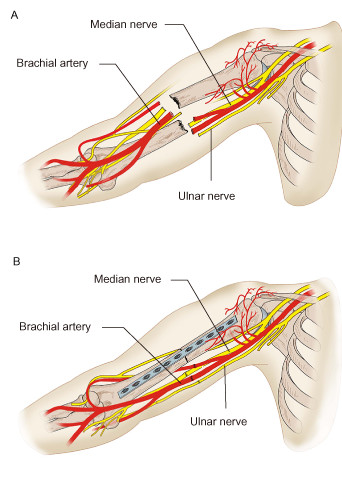Accident/Fracture Associated Vascular Injury Repair
- Home
- Vascular Treatment
- Accident/Fracture Associated

Vascular surgeons play a crucial role in managing vascular injuries associated with accidents and fractures. These injuries often require specific vascular repair to prevent adverse outcomes. Studies have highlighted the significance of prompt recognition and reconstruction of vascular injuries in trauma patients, emphasizing the importance of immediate repair of the injured artery or vein to prevent further complications and improve limb salvage.
Understanding Accident / Fracture Associated
Vascular surgeons play a crucial role in coping with vascular injuries related to injuries and fractures. These injuries regularly require specific vascular repair to save you from adverse outcomes. Studies have highlighted the importance of spark-off popularity and reconstruction of vascular injuries in trauma sufferers, emphasizing the importance of instant restoration of the injured artery or vein to prevent similar complications and improve limb salvage.
In summary, the management of vascular accidents associated with accidents and fractures calls for a multidisciplinary method, frequently related to collaboration between orthopaedic surgeons and vascular surgeons. Prompt recognition, well-timed intervention, and specialized care are essential to optimize outcomes for patients with these complicated injuries.
Managing Accident / Fracture Associated
The management of vascular accidents associated with accidents and fractures is a crucial component of trauma care, frequently requiring specialized intervention from vascular surgeons. Here are a few key insights from the quest consequences:
Recognition and Verification of Vascular Injury: The medical recognition of associated vascular accidents and their verification through arteriography, Doppler examination, or surgical exploration are essential for early vascular repair and limb salvage .
Standard Protocol for Management: Patients with vascular injuries associated with fractures or dislocations are often controlled consistent with a well-known protocol, which includes the liberal use of preoperative arteriography, early fasciotomy whilst indicated, individualization of timing and sort of orthopaedic processes, and arterial reconstruction commonly with interposition reversed saphenous vein grafts .
Vascular Surgeon in Vadodara (Rutvij Shah):
Clinical Impact and Prevalence: Vascular damage related to extremity trauma occurs in a small percentage of sufferers with long bone fractures, but the effect may be massive, mainly in instances of knee dislocation .
Fractures or dislocations are associated with 10% to forty% of vascular injuries of the extremities, highlighting the significance of well-timed reputation and intervention.
Collaborative Approach: Management of vascular accidents related to injuries and fractures often
calls for a multidisciplinary technique, involving collaboration between orthopaedic surgeons and vascular surgeons. A successful approach requires clear priorities, a logical plan of interventions, and near coordination between diverse subspecialty services.
-
What is the classification of a fracture?
A closed fracture is a break to the bone that does not damage surrounding tissue or tear through the skin. By contrast, a compound fracture is one that damages surrounding tissue and penetrates the skin. Compound fractures are generally more serious than simple fractures due to the risk of infection.
-
How many categories of fractures are there?
Moreover, accidents happen, and it's incredibly likely a hard fall or severe injury could result in a fracture. Although there are many types of bone fractures, there are four main categories a fracture usually falls under: displaced, non-displaced, open and closed.
-
What are three different types of surgical fracture repair?
Surgical treatments for fractures often include internal fixation, external fixation, arthroplasty, or bone grafting.
-
What is traumatic vascular injury?
Vascular trauma occurs when a blood vessel sustains either a blunt injury or a penetrating injury. Vascular trauma occurs when an artery (a blood vessel that carries blood away from the heart) or a vein (a blood vessel that carries blood back to the heart) sustains an injury.
-
What is vascular compromise after fracture?
Vascular compromised fractures are injuries with a severely impaired healing process due to the limited blood flow to these areas. Because of this, fractures in these regions are associated with a high rate of necrosis and union complications, making the management of these injuries challenging.
